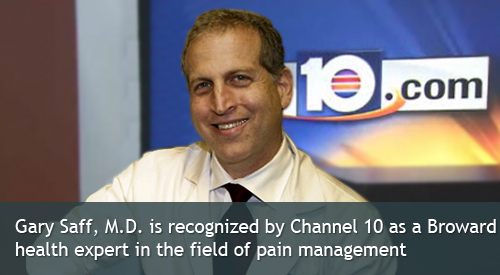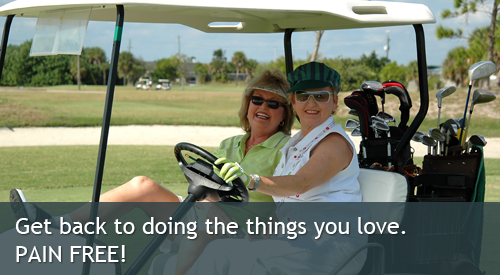Metabolic syndrome is important to understand from a pain management perspective. It’s existence is one of the reasons for inflammation and degeneration causing pain, especially involving the back and joints. As a physician, it is important to not just treat the painful area, but the patient as a whole.
Metabolic syndrome is a term used to describe a condition which includes high blood pressure, resistance to insulin, abnormal cholesterol and triglyceride levels, and obesity with excess body fat around the waist. This syndrome places you at greater risk of developing medical problems such as heart disease, stroke, and diabetes. In pain management, these patients are more often found in our offices and tend to be more resistance to pain treatment protocols. Metabolic syndrome is on the rise in the United States. Lifestyle changes and medications can help delay or prevent the development of serious medical conditions.
Lifestyle changes, diet, smoking cessation, and medication can help improve all of the metabolic syndrome components. Regular exercise and weight loss is helpful. Losing as little as 5% to 10% of your total body weight can make a dramatic difference. Nutrition consultation can help you with meal planning and healthy food choices.
Increasing age is associated with metabolic syndrome, although it is becoming more predominant in school age children. Obesity is a risk factor for metabolic syndrome, especially when the weight is concentrated around the waist giving the appearance of an “apple shaped” body. High blood pressure, gestational or family history if diabetes, polycystic ovary disease, and heart disease all increase your risk of metabolic syndrome.
Given Santa’s weight, age, pipe smoking, and sedentary lifestyle, it’s a good bet that he is likely to have metabolic syndrome and sitting in my waiting room one day!!
Posted in General by on Dec 18th, 2013. ![]()
The liberal use of opioids for the treatment of chronic pain is a topic of intense
focus and debate. It was a recent topic on CNN due to the growing number of orphaned
children resulting from parental opioid-related deaths.
America now consumes 80% of the global opioid supply, though only contains 4.6%
of the world’s population. Over the last two decades, there has been liberalization
of the laws regarding opioid prescribing and a greater societal demand for better
pain control. This, combined with aggressive opioid marketing by pharmaceutical
companies, has resulted in spiraling increased use of opioid pain killers, though
there remains minimal scientific evidence of their effectiveness in the treatment
of chronic non-cancer pain.
Presently, there are more than 86,000 orphaned children in Kentucky, resulting from
parental complications fom prescription drug use. The national number of children
orphaned after parental overdoses is difficult to assess however there is a death
from prescription drug-related overdose every 19 minutes, with most of these prescriptions
being opioids. The epidemic affects every state, with Florida being one of the most
involved.
Undoubtedly there is a role for opioids in pain management, but the use must be
judicious and guided by a physician skilled in a more comprehensive, integrated
approach to pain management. The integrated approach would certainly decrease reliance
on opioid medication, as discussed in Gary Saff M.D.’s article addressing the crisis
http://www.thetruthaboutchannel.com/documents/the-truth-about-the-pain-crisis.pdf
A greater focus on health care provider education and a broader public awareness,
such as in the below CNN link, will hopefully take the heartbreak out of the opioid
orphans.
http://www.cnn.com/2012/12/14/health/kentucky-overdoses/index.html
Posted in General by on Mar 6th, 2013. ![]()
With recent technological advances, there are exciting improvements in the design and creation of artificial limbs. This is formally described in a recent article by Dr. Saff and his prosthetist colleague, Kevin Garrison, in Case In Point magazine, searchable at www.dorlandhealth.com. With a properly fitting prosthetic, especially those involving the legs, there is a remarkably decreased risk of developing musculoskeletal and remaining limb stump pain at the attachment site of the prosthetic. Strong, durable, yet lightweight materials used to create the prosthetic limb, coupled with automatic vacuum suspension and microprocessor technologies, allow for normal walking and balance with movement both at the artificial knee and ankle joint. Upper extremity prosthetics now allow all-finger natural proportionally controlled motion. The art is to balance the proper biomechanics to achieve the “perfect fit”, which varies from patient to patient and unique to every prosthetic. The “one size fits all” non-custom prosthetics, though well intended, can actually be a destructive force.
In pain management, we see such minor incidents such as a toe nail injury or infection lead to gait abnormalities, resulting in chronic lower back, hip, and knee pain. In time, this can eventually translate up to the cervical spine and musculoskeletal system as a whole. Needless to say, an improperly fitted or aligned lower extremity prosthetic can be a catalyst to the development of these pain syndromes. Lumbar and cervical disk degeneration with resultant scoliosis, nerve impingement, and spinal stenosis, need to be addressed at the spinal source of pain but also by addressing issues involving the prosthetic. To attempt to treat the patient otherwise is futile and frustrating both for the patient and clinician. Prosthetics are very complicated devices but can restore an active lifestyle when fitted properly, as discussed in Kevin Garrison’s book “It’s Just a Matter of Balance: You Can’t Put a Straight Leg on a Crooked Man”
Posted in General by on Jan 7th, 2013. ![]()
There are many risk factors predisposing Santa to sciatica. The most obvious is his weight, resulting in a lumbar lordosis, or low back extension backward. The weight and lordosis causes excessive wear and tear on the lumbar disks and facet joints, resulting in back pain and nerve impingement causing sciatica. Age is also a risk factor, with increasing sciatica frequency as you get older and into your “Santa years.” Lack of activity, such as what Santa certainly experiences confined indoors at the North Pole, compounded with his stressful career of getting all those gifts delivered in a single night, are two additional sciatica risk factors. Santa is certainly doing a lot of heavy lifting, shuffling himself and gifts into those chimneys. Improper lifting and twisting under heavy weight, referred to as “poor body mechanics,” is one of the most common reasons for disks to herniate.
At Integrated Pain Solutions, we understand sciatica, its many causes and how to properly manage it. Trials of physical therapy, anti-inflammatories, and muscle relaxants are first line therapies. Occasionally a short dose of oral steroids or low dose narcotics are indicated. With more refractory cases, epidural steroid injections, targeting the area of nerve impingement, is curative. With these appropriate conservative measures, surgery is rarely indicated. Nutritional therapies targeting the weight issues, as well as core strengthening and instruction on body mechanics, will help treat the root cause of the sciatica and prevent recurrence.
Posted in General by on Dec 11th, 2012. ![]()
Thanksgiving is the beginning of the delicious holiday season known for packing pounds and breaking healthy diet habits. However, not all festive foods are bad for you. Here are some foods that can help you celebrate a nutritious Thanksgiving. Cranberries are packed with phytonutrient, vitamins, and minerals. It is also good for the kidneys, bladder, and skin. Pumpkin is also commonly used during this holiday and is very high in carotenoids and is a good source of fiber.
Don’t forget to spice up your foods! Those spices and other potent flavor adding foods have tremendous health promoting properties. See below to see the present your holiday spices are packing for you:
- Helps digestion – cinnamon, ginger, clove, anise, fennel, oregano, rosemary
- Anti-inflammatory – rosemary, tumeric, cinnamon, ginger
- Anti-cancer – cayenee, turmeric, garlic, oregano
- Lower blood sugar – cinnamon, clove, oregano, sage, garlic
- Lower blood pressure – cinnamon, garlic, oregano, cardamom, onion
- Antioxidant – clove, cinnamon, oregano, tumeric
The turkey is our middle man. He is high in protein and will help fill us up, so instead of having three servings of stuffing we can be satisfied with just one.
Try and remember, there will be plenty of leftovers so you don’t have to try and get it all in at once and gorge yourself. Eat slow and you will get full with less food. Fill up on salad and non-starchy veggies. Have sensible amounts of protein. Use coconut oil andcoconut milk products for healthy fats which give flavor and fill you up. When it comes to carbs its all about moderation. Do your best. Most importantly….
ENJOY! Enjoy the food and the
time with the family! GiveTHANKS for all you have, and remember
to be GIVING
Posted in General by on Nov 6th, 2012. ![]()
Pain is the first alarm warning us of danger. People who are born without the blessing of feeling pain are always in serious trouble; they can’t avoid what they can’t intuit through one of their senses. We get too close to a flame and the heat causes us to flinch and pull back, saving us from serious burns. A child cuts his finger on a sharp object and pulls away, avoiding a deeper cut. A skinned knee helps a child learn how to balance more carefully on a skateboard, or ride his or her first bike. This kind of pain, the acute kind, is present for a reason: to warn us of danger. Or perhaps, acute pain will draw our attention to a condition needing our attention, such as infection from an appendix about to rupture! PAIN is invaluable, and we should be humbly grateful every single time we experience the sensation of pain.
Chronic pain, however, is a different story. Of what human value is chronic pain? Some might consider chronic pain as a tedious, drawn-out warning of mild to severe danger. Chronic pain is ongoing discomfort of varying degrees – from the kind of pain that can almost be ignored to the biting, encompassing pain that simply dominates the conscious mind. The development of chronic pain should never be ignored. Usually, if not always, pain needs the careful consideration of a qualified physician in order to remedy the situation before it controls the patient’s life.
Nothing is as discouraging or as depressing as the feeling of uselessness, helplessness, and depression from unrelieved pain. The victim is left lonely and afraid. We are basically social beings, and as long as we can relate to each other, and help someone else occasionally (even if it’s just with a smile of encouragement), we feel better physically and mentally. However, when the chronic pain dominates our lives, all the small interactions that make us smile and laugh as humans is washed away.
For our purpose in discussing pain, think of the brain as the clearing-house in a gigantic import-export company. Our brains have the uncanny ability to categorize the nerve impulses pulsing through our systems faster than we can have the words to describe what part of our body is injured. The brain is the epicenter where emergency procedures are assigned, administered and monitored. The brain analyzes the pain and signals us to faint, scream, or grit our teeth and wait. And, when possible, to try and stem the flow of blood, or get into a more comfortable position, or tear a shirt with our good hand and our teeth, or signal for help from a passer-by – or, in other words, to fight. Our natural instincts move into action when we are injured, and we fight hard to survive. Without this survival instinct, we wouldn’t make it. It is this mysterious power that makes the maimed and crippled soldiers determined to walk again, even when they have lost one or both legs and some one or both arms as well, or the young man blinded by shrapnel determined to learn Braille. The human body, under the direction of the human brain, is a tough customer. By optimizing pain management through the considerate and compassionate care of a medical professional, the patient can attain as productive a life as possible, thereby allowing for a greater quality of life and goal attainment.
Posted in General by on Oct 24th, 2012. ![]()




FBComments
Comments